Damage to trees and shrubs caused by mammals and birds is fairly easy to identify. Here is a short list of species that tend to do the most damage to trees. Click HERE for more photos of tree damage.
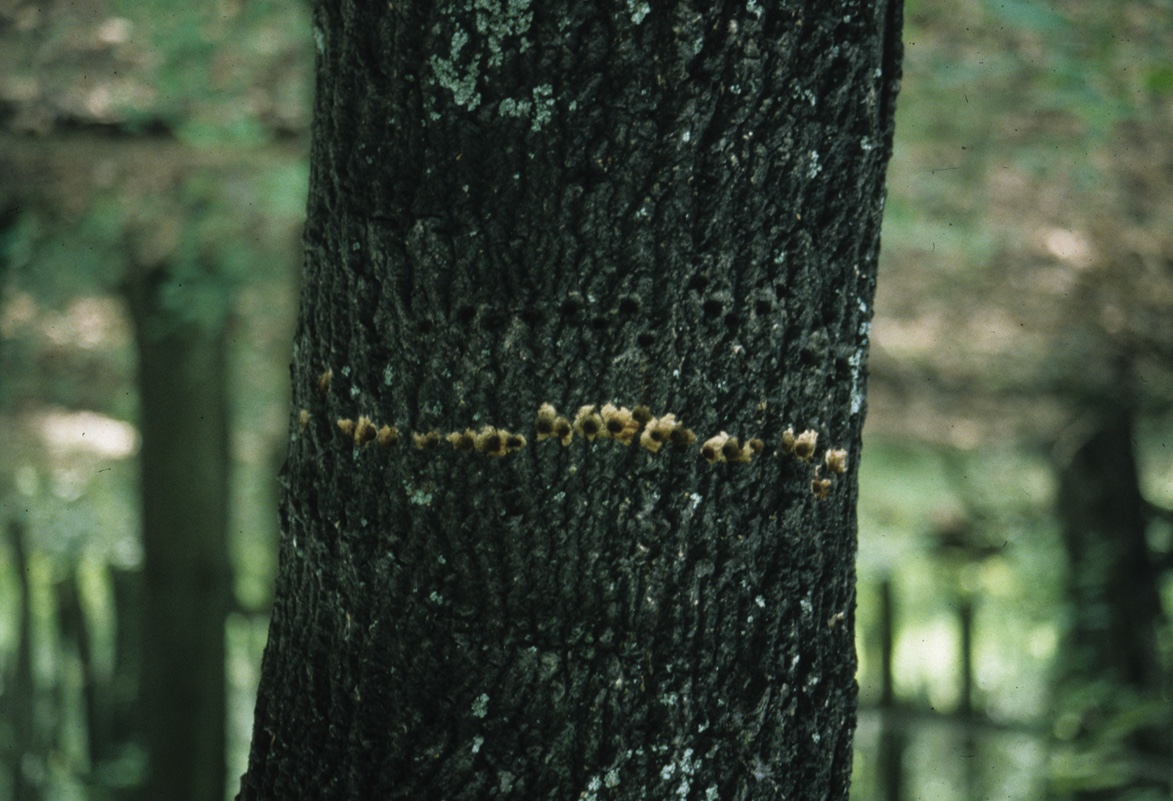
Photo: Willowbrook Wildlife Center
Woodpeckers drill several different types of holes in trees. Small holes are made while they are drumming to attract mates or alert other woodpeckers that they have claimed this territory. Larger holes are made so that they can excavate a small cavity within the tree to provide a roost during the colder months or a nest during the spring or summer. Holes with a vertical or horizontal pattern are made while the woodpeckers are foraging for insects under the bark.
Click HERE for woodpecker information, damage prevention, and control methods.
There is no mistaking beaver damage. Since beavers eat wood and use trees to build their dams, they need to take down several trees to survive.
Click HERE for beaver information, damage prevention, and control methods.
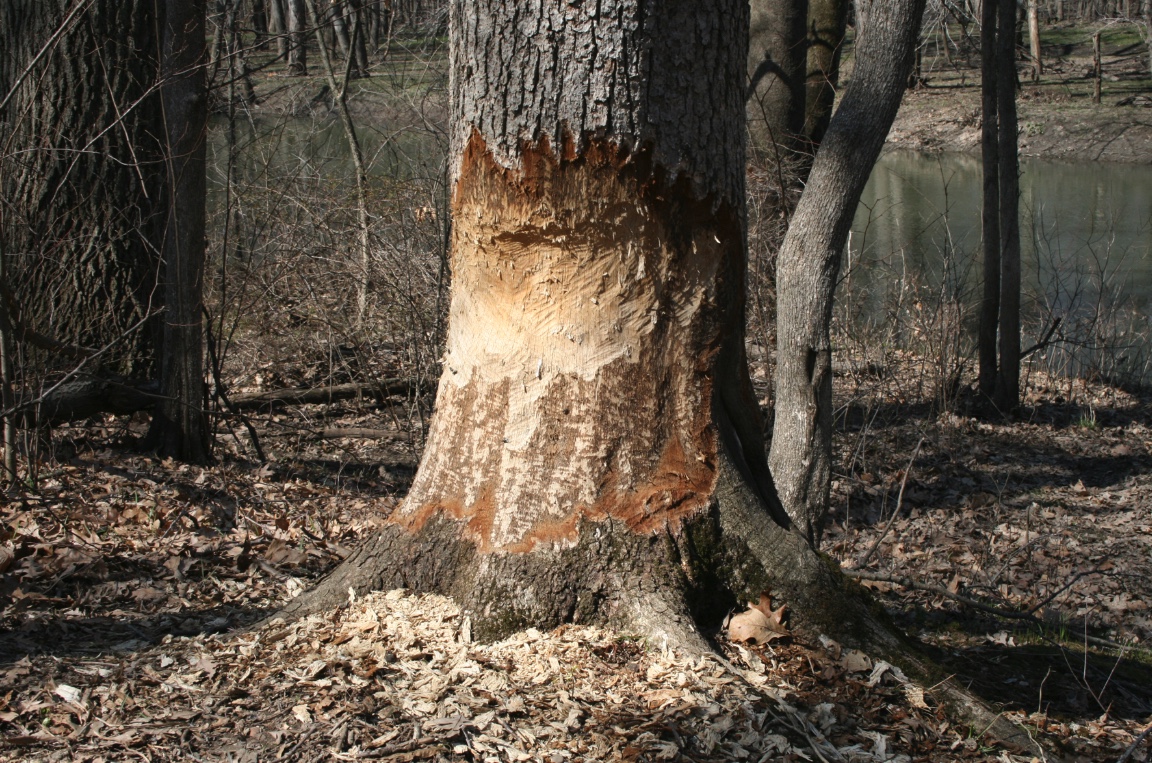
Photo: Laura Kammin
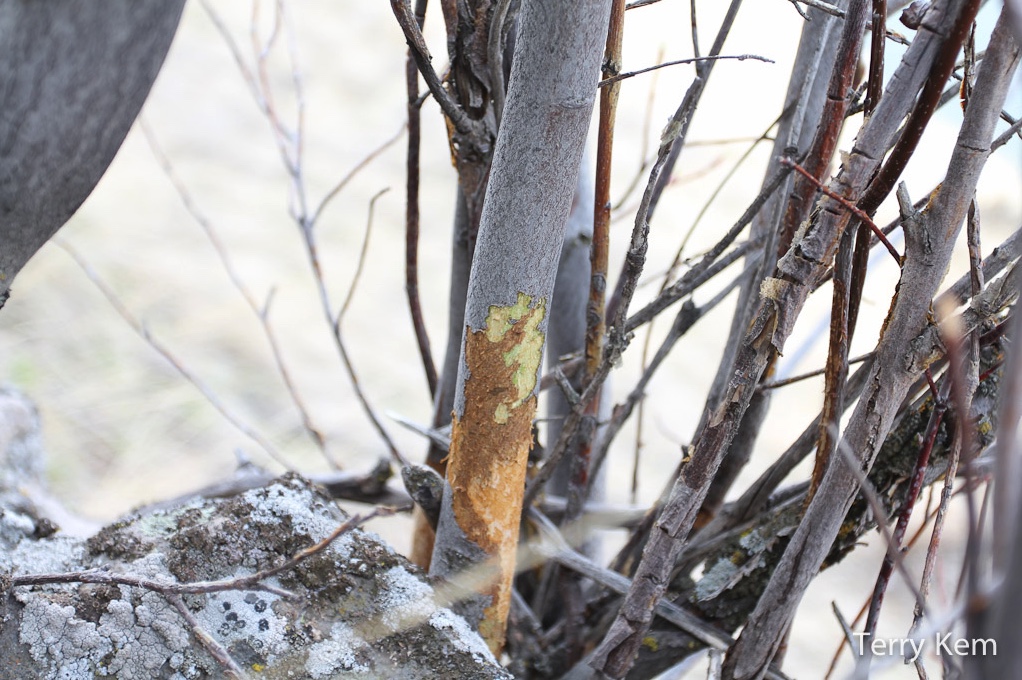
Photo: Terry Kem
Like rabbits, voles will eat small twigs and bark close to the base of the tree. Since they are so small, they cannot scrape off much bark at one time. However, prolonged feeding at the base of a young tree can girdle and kill it.
Click HERE for vole information, damage prevention, and control methods.
Deer can damage trees when they repeatedly rub their antlers on them. Deer will also browse young saplings during the growing season and strip bark from trees during harsh winters when other food is unavailable.
Click HERE for deer information, damage prevention, and control methods.
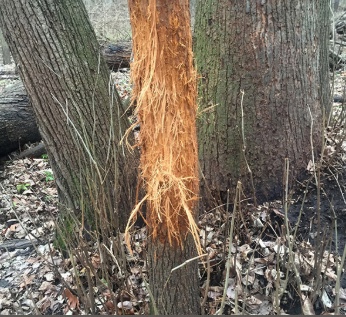
Photo: IDNR
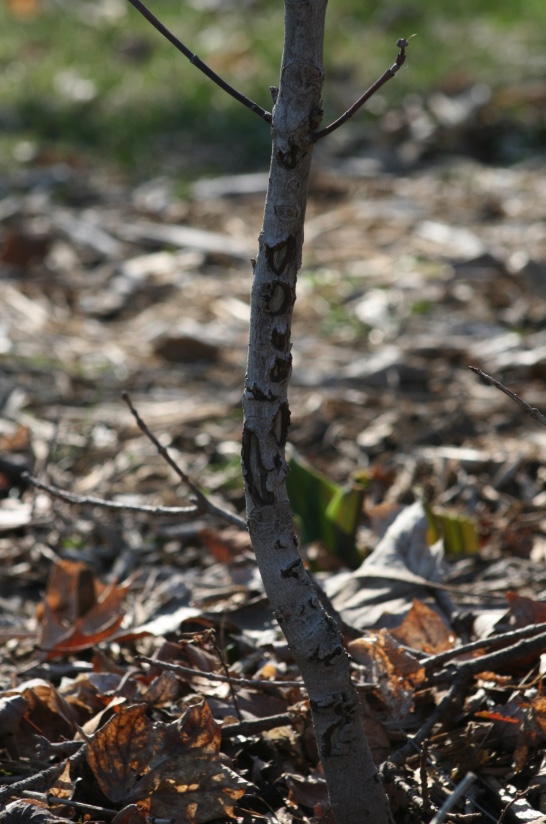
Photo: Laura Kammin
Rabbits will clip twigs or chew bark from young trees. The damage they cause is limited to their reach. During warmer months, the damage is confined to less than six inches above ground, but during snow cover they will climb snow drifts to feed higher.
Click HERE for rabbit information, damage prevention, and control methods.
The Wildlife Illinois website was authorized by the Illinois Department of Natural Resources (IDNR) in partial fulfillment of project W-147-T. The website was developed by the National Great Rivers Research and Education Center, 2wav, and the IDNR in partnership with the United States Department of Agriculture Animal and Plant Health Inspection Service Wildlife Services and University of Illinois Extension to provide research-based information about how to coexist with Illinois wildlife.